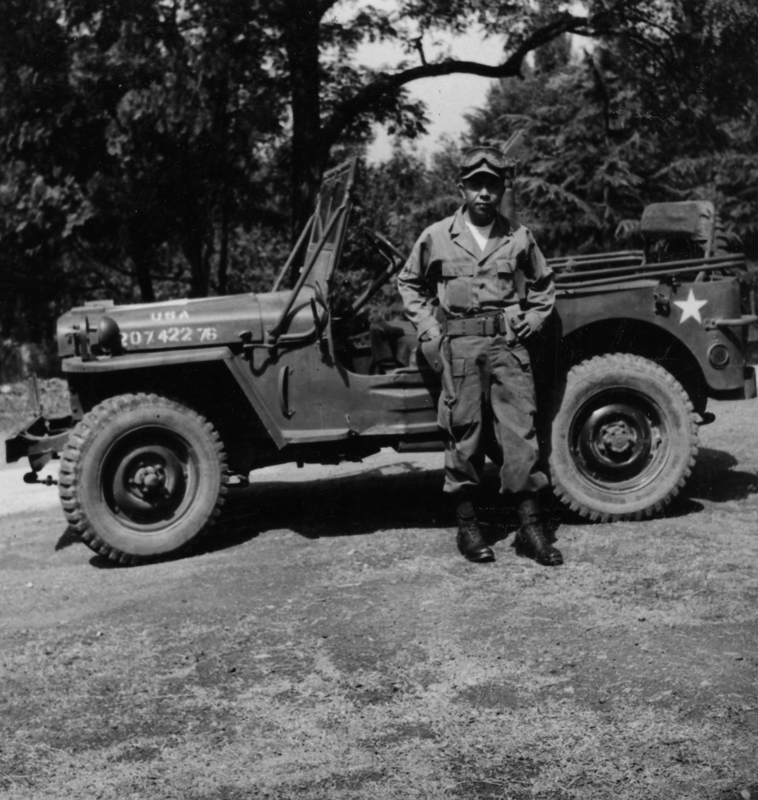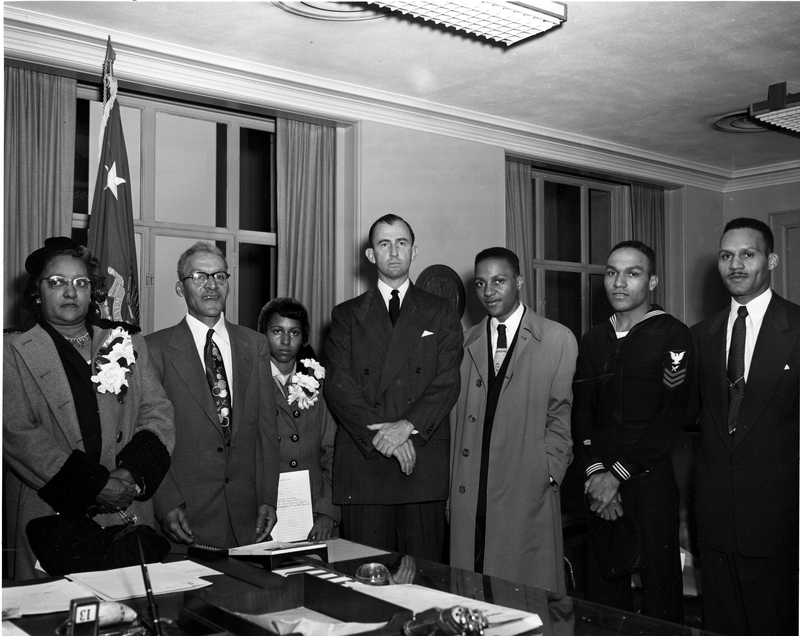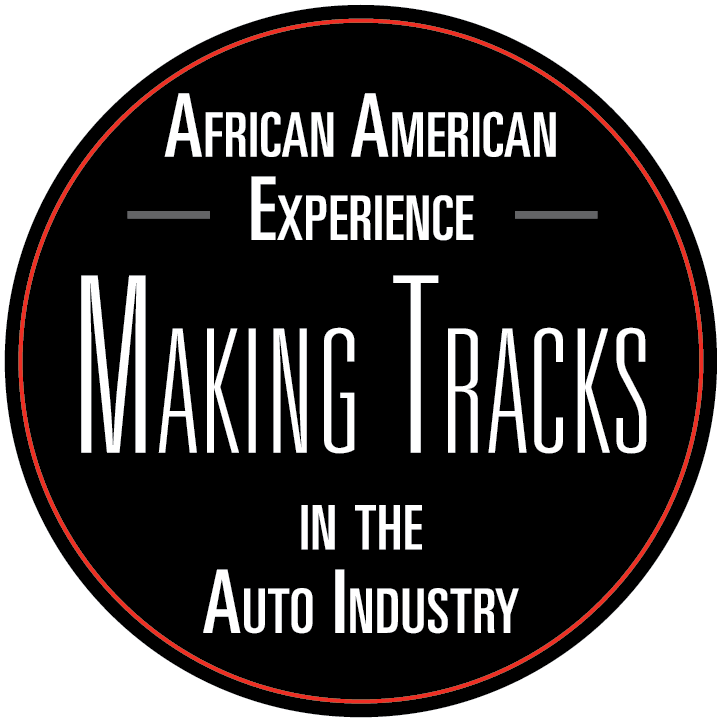After a record production year in 1950, manufacturing was restricted in the passenger car industry because the US government wanted to prioritize scarce materials like steel and copper, among others, for defense production in the context of the Korean “police action.” The beginning of the Korean War affected all the automakers. Production quotas were imposed, as the industry accepted military contracts. Vehicle production dropped by 1,300,000 units in 1951 in comparison to 1950. With automakers also facing price controls, production diminished by another million in 1952. In 1953, after the government withdrew production quotas (in March), and output rose impressively over to six million units. However, independent automakers produced 300,000 cars less than in 1950, the previous year in which 6,000,000 cars were built. The impacts of two wars and the importance of the Big Three are reflected in these statistics.
 Seargeant Diale standing by Gen. Frank E. Lowes Jeep 1950 image courtesy of Harry Truman Library
Seargeant Diale standing by Gen. Frank E. Lowes Jeep 1950 image courtesy of Harry Truman Library
During the Korean War, the National Production Authority did take measures to support the independant automakers, who were less in a position to counterbalance their losses by engaging in military production: but even with the help of the National Production Authority, who gave a larger part of the car production quota to independents such as Willys-Overland and Nash, independent carmakers were significantly affected by the Korean conflict building 35% less cars in 1953 than their peers had done in 1950.
 Family of Sergeant Cornelius H. Carleton 1952 image courtesy of Harry S. Truman Library
Family of Sergeant Cornelius H. Carleton 1952 image courtesy of Harry S. Truman Library
Once the Korean situation had been stabilized and government controls were removed in March 1953 an intense battle began among the Big Three for market share, arising partly from the Ford management’s wish to outproduce Chevrolet. A buyer’s market once again emerged, with all makes being readily available since the manufacturers, especially the Big Three, were able to produce the quantity of cars they wanted to satisfy buyers’ demands. The end of the Korean war also introduced rivalries in terms of automotive styling, rapid changes in car models and a rapid increase in terms of the number of available car models.
RESEARCH & WRITING
Louise-Helene Filion, Ph.D.
PHOTO RESEARCH
Rebecca Phoenix
Sources:
-Smith, Philip Hillyer. Wheels within Wheels. A Short History of American Motor Car Manufacturing. New York, Funk & Wagnalls, 1968, especially p. 149-151.
-Edwards, Charles E. Dynamics of the United States Automobile Industry. Columbia (S.C.), University of South Carolina Press, 1965, especially p. 16-17, and p. 28-29.
-White, Lawrence J., The Automobile Industry since 1945. Cambridge (Mass.), Harvard University Press, 1971, especially p. 126 and p. 201.


